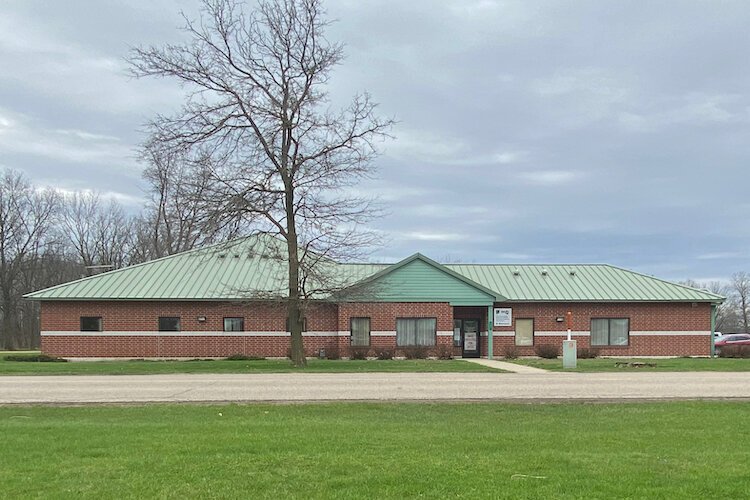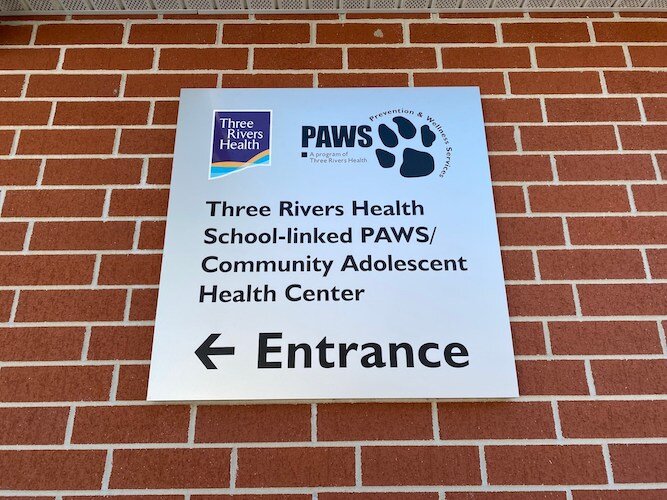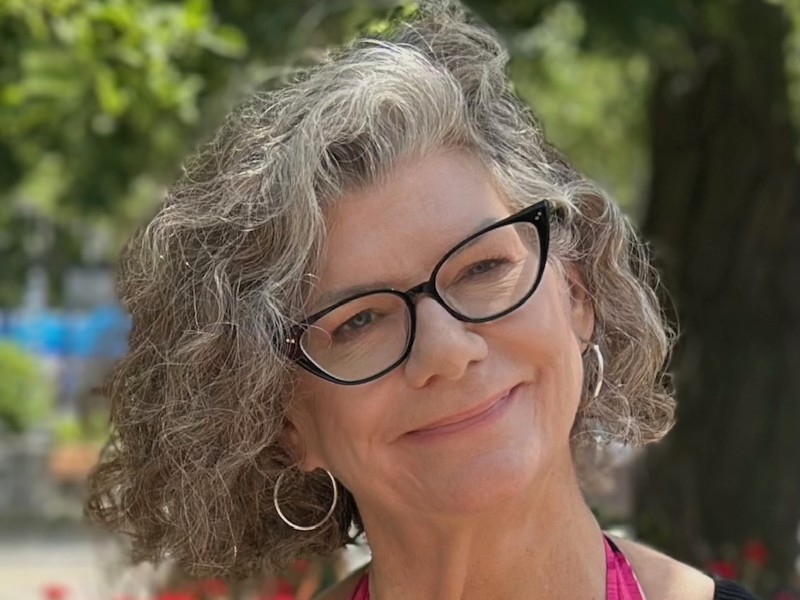How one clinic is making mental health services more accessible for Three Rivers students
If you're a middle school or high school aged student in Three Rivers, the distance between where you attend school and a place that provides mental health services has never been shorter. Thanks to PAWS (Prevention and Wellness Service), a school-linked community adolescent health center, Three Rivers teens and tweens simply have to cross the street.
This story was originally published by Watershed Voice and is part of the Mental Wellness Project, a solutions-oriented journalism initiative covering mental health issues in southwest Michigan, created by the Southwest Michigan Journalism Collaborative. SWMJC is a group of 13 regional organizations dedicated to strengthening local journalism. For more info, visit swmichjournalism.com.
If you’re a middle school or high school aged student in Three Rivers, the distance between where you attend school and a place that provides mental health services has never been shorter. Thanks to PAWS (Prevention and Wellness Service), a school-linked community adolescent health center, Three Rivers teens and tweens simply have to cross the street.
In a climate where Michigan emergency rooms are confronting a “tidal wave of sadness” among young patients, and the state simultaneously faces psychiatrist and children’s psychiatric inpatient capacity shortages, readily accessible mental health services are as paramount now as ever before. In 2020, at the height of the COVID-19 pandemic, the proportion of mental health-related emergency department visits among adolescents aged 12 to 17 years also increased 31 percent compared with visits during 2019.
So we know there’s a problem, but how are clinics like PAWS addressing these issues?
Combating care fragmentation
According to a 2018 paper in NEJM Catalyst, 33 percent of providers say care fragmentation — failing to integrate both physical and mental health services at a given location — is a significant barrier to sufficient mental healthcare access.
PAWS aims to provide important primary, preventative, and early intervention health care services to 10 to 21-year-olds, including mental health and counseling services with a licensed master’s social worker. The clinic represents a collaboration between Three Rivers Health, Three Rivers Community Schools, Community Mental Health, and the Community Health Agency of Branch-Hillsdale-St. Joseph County.

Three Rivers Middle School has now has its own school-based licensed master social worker, Andrea Scott, through the State of Michigan’s E3 program, which the school was approved for based on the City of Three Rivers’ status as an at-risk community. There are over 90 such programs at schools across the state, and the position and counseling services provided by Scott are made possible through grant funding from the Michigan Department of Health and Human Services.
Simply put, Three Rivers Middle and High Schoolers can now get their annual sports physical and a therapy session in the same afternoon, which wasn’t always the case.
Kiel Lucas, a registered nurse and PAWS clinic program coordinator, has worked in the building that now houses the clinic, along with Three Rivers Health Family Care and My Community Dental Centers, since it was built. Lucas formerly served as a school nurse for Three Rivers Community Schools, and at that time the building was simply a place for students with minor injuries or illnesses to seek care. In 2011, a separate grant from the State of Michigan spurred the building’s transformation from a school nurse’s office to a full-fledged physical and mental health clinic.
Lucas said 80 to 85 percent of the center’s client base are Three Rivers students, but they also serve kids from surrounding communities like Schoolcraft, Mendon, Centreville, Burr Oak, and Colon, giving a rural county like St. Joseph County accessibility to services it may not otherwise have, all in one place.
Questions, answers, problems, and solutions
There are several ways students can be directed to PAWS’ mental health services. They can be referred by their parents, teachers, or administrators; they can seek out the services themselves; or they can get the help they need by visiting the center’s primary care provider and Family Nurse Practitioner Anne Davidhizar, who performs behavioral assessments with all of her patients.

“What we do as part of our workflow practice, is we always ask every student anytime they visit, every visit, ‘Do you have any feelings of depression or anxiety?'” Lucas said. “And if they give us a positive answer, then we have them fill out a screener that provides us much more detailed information. Then that’s given to (Limited Licensed Master Social Worker) Ben (Cowe). Ben goes through and scores it — we have a case management system — so he says, ‘Little Tommy scored positive in these areas, would you contact the parents to see if we can provide services?'”
According to a 2019 Michigan High School Youth Risk Behavior Survey conducted by the Centers for Disease Control and Prevention, 18.1 percent of students polled reported being bullied online, while 18.7 percent said they seriously considered committing suicide, and 7.8 percent said they actually attempted suicide.
The aforementioned screeners, called Rapid Adolescent Prevention Screening or RAAPS, are a standardized validated risk screening tool developed to support professionals in addressing risk behaviors impacting wellbeing in youth. The version of the form PAWS uses features 21 yes or no questions and asks students things like:
“Have you been threatened, teased, or hurt by someone on the internet, by text, or in person causing you to feel sad, unsafe, or afraid?”
“Do you often feel sad or down as though you had nothing to look forward to?”
“Have you seriously thought about killing yourself, tried to kill yourself, or have you purposely cut, burned, or otherwise hurt yourself?”
Lucas said there is a newer version of the RAAPS form that asks additional questions related to housing insecurity, whether students have working utilities like heat and water at home, or reliable access to food. However, because PAWS isn’t equipped to address all of those potential needs outside of the occasional gift card, they have held off using the updated form until they can properly provide those services.
If the clinic can’t help a student or the student isn’t interested in receiving certain services from PAWS, the center will refer a patient to Covered Bridge Healthcare of St. Joseph County, Community Mental Health, or an independent, private practice.
‘Very difficult to quantify’
How can the effectiveness of a mental health program be measured? Patient feedback, of course, helps but does it provide measurable data that can determine a program’s efficacy?
Family Nurse Practitioner Anne Davidhizar said PAWS doesn’t record the number of mental health patients it reaches, at least not specifically, as students often receive a number of services at the clinic outside of mental healthcare. So without hard data, how does the clinic determine what works and what doesn’t?
“Mental health status by its nature is very difficult to quantify,” Davidhizar said. “We do our best to measure/quantify efficacy of treatment by having the patient complete screening tools at the onset of intervention and periodically throughout the therapy.”
Davidhizar and Cowe work in tandem, using pharmacotherapy and psychotherapy respectively, and a variety of screening tools to determine what treatment a student should receive, and how effective or ineffective that treatment proves to be.
“Both of us provide pre- and post-intervention screening tools to measure baseline mental health status and then monitor effectiveness of our interventions,” Davidhizar said. “The tools we use vary slightly, as appropriate, for the respective therapies we are implementing. We take patient reporting into consideration, of course, but the tools allow us to gather data that can be quantified to assess effectiveness of the interventions.”
Access and affordability
While PAWS certainly has limitations (they can’t offer psychiatric inpatient beds, for example), and it doesn’t have all the answers or the capacity to solve every problem, making mental health care more accessible and affordable for Three Rivers youth is a start.
Students can visit PAWS during school hours, so parents don’t have to take time off work or find transportation to and from an appointment. High school students are allowed to walk across the street for their visits, and middle school students are picked up and brought across the street by someone from the clinic. Students don’t get marked absent for missing class, as it’s considered a medical-related absence, so the 2 to 4 visits a month an average student might have are spread across multiple classes and never lead to truancy.
Beyond accessibility, PAWS never turns a student away based on their ability to pay for their services.
“We don’t turn people away if they’re unable to afford it or they don’t have insurance,” Lucas said. “We do have grant dollars set aside for that, and parents are never sent to collections if they are unable to pay. Sometimes for mental health, and hopefully this will change, most of the time co-pays for mental health are much more expensive than just doctor visits. So if you’re talking about a student who could benefit from weekly appointments, you’re talking $40 a week, most kids can’t afford that.”
By removing accessibility and financial barriers between students and mental health services, the PAWS clinic is saving lives and dollars for those most at-risk.
Alek Haak-Frost is executive editor and publisher of Watershed Voice.














